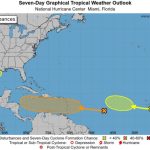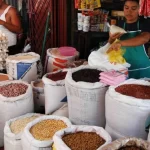“Margaritas,” the popular motorcycle cabs that service the Northwest Line.

The so-called "Margaritas "LISTÍN DIARIO
With the slogan “No se moje ni coja sol,” motorcycle cabs have established themselves in the daily life of the province of Valverde and other towns of the Northwest Line, serving as the preferred method of transportation for its residents.
Their arrival some time ago and subsequent establishment have brought remarkable acceptance, as they are frequently observed in every corner of the city in search and transfer of passengers.
However, this was not always the case. Quilvio Vásquez, leader of the Northeast North Cibao Motorcycle Taxi Coordinating Committee (Comolinoci), mentions that at one time, they were utterly rejected by other transport sectors, but with the proper permits, the adversity diminished.
“The sun ends up rising for all,” indicated several drivers of motorcycle cabs to journalists of Listín Diario, given the disagreement which occurred at a particular moment with drivers of regular cabs, motoconchos, and routes of the concho.
This method of transport stands out in other regions, as in India, a point which is evidenced by how this locality is portrayed in movies and reports, where the so-called “tuk-tuk,” “auto-rick” or “rickshaw” appear as they are called there.
Given their proliferation in the northwest, could these small vehicles of Asian origin become a national icon?
They are here to stay
In Valverde, five companies are dedicated to providing this type of transport service, including more than 1,700 motorcycle cabs distributed in the corresponding municipalities of Mao, Esperanza, and Laguna Salada.
This was explained Vásquez while mentioning that when considering those informal “margaritas,” which are not registered in the list, the sum can reach two thousand in the province.
Vasquez also indicates that this mode of transport in the Northwest Line is not new; although it has remained somewhat “silent,” there are motorcycle cab drivers who have up to 25 years of service.
“Although there were few at the beginning, as the population grew, the need increased, for the reasons that 80% of the working class now uses them,” he emphasizes.
And the fact is that most people choose to travel on these motorcycles instead of a concho route or a regular cab because, according to them, unlike the competition, they offer greater economy, speed, and comfort.
Cost of fares
Depending on the route to be traveled, the cost of the fare can range from 50 pesos to 200 pesos; the longer the distance, the higher the fare.
“While a cab you take it a few kilometers and they charge you 500 and even 600 pesos,” says the leader.
What motivates people to use motorcycle cabs?
“When people ride there, they feel at home,” says one of the drivers, whose name was withheld, indicating that they ensure the passenger’s safety by watching the speed level while being transported.
In addition to emulating the work methodology of the motoconchos by being at specific stops, such as traffic lights and commercial posts waiting for passengers, motorcycle cabs also compare with other transportation methods.
With a phone call, it is possible to request a unit to pick them up, but at the same time, they can be stopped while they move on the street as if they were concho routes.
Quilvio Vásquez recognizes that the operation of this method of transportation has affected the other sectors. Still, he mentions that it is due to the carelessness of the plazas and the already-known modes of transportation.
“Many times those who have a fixed route release it at 6:30 or 7:00 at night, then students and workers can’t find anything to go on,” assures Vásquez, given the inefficiency of the other transporters in the face of the “margaritas.”
Type of motorcycle
Despite being a motorcycle as it is commonly remembered, the difference is that it consists of a tent or cover that protects the passengers and the driver from the sun and the weather effects.
Currently, two types of motorcycles are used in this method of transportation: two-wheelers, which tend to be more informal, and three-wheelers.
Vasquez mentions that the three-tire unit was introduced recently, so they were incorporated into the federation to have some “control” over their operation on the streets.
The latter tend to be more organized because the companies have fleets of vehicles of this type, which generate higher profits, but how much does a moto-taxi driver earn, and how does the profit scheme work?
Profits
The drivers explain that they primarily work for hire. That is to say, they give a daily commission to the owner of the vehicles for an amount ranging from RD$500 to 700 pesos.
So, depending on the company they work for, the surplus from this amount they manage to generate during that day corresponds to them, although they must cover fuel and other mishaps from there.
There are good, bad, and perfect days for them. They indicate that the remuneration, after paying the fee to the company that rents them the motorized unit, can exceed 2,000 thousand pesos per day.
“As they do not have enough money to buy, to give 300 or 350,000 pesos for one of those units (the margaritas), most of them are drivers of those companies that have three-wheeled units,” mentions Vásquez.

















Contaminacion visual… Parecen ventorrillos…